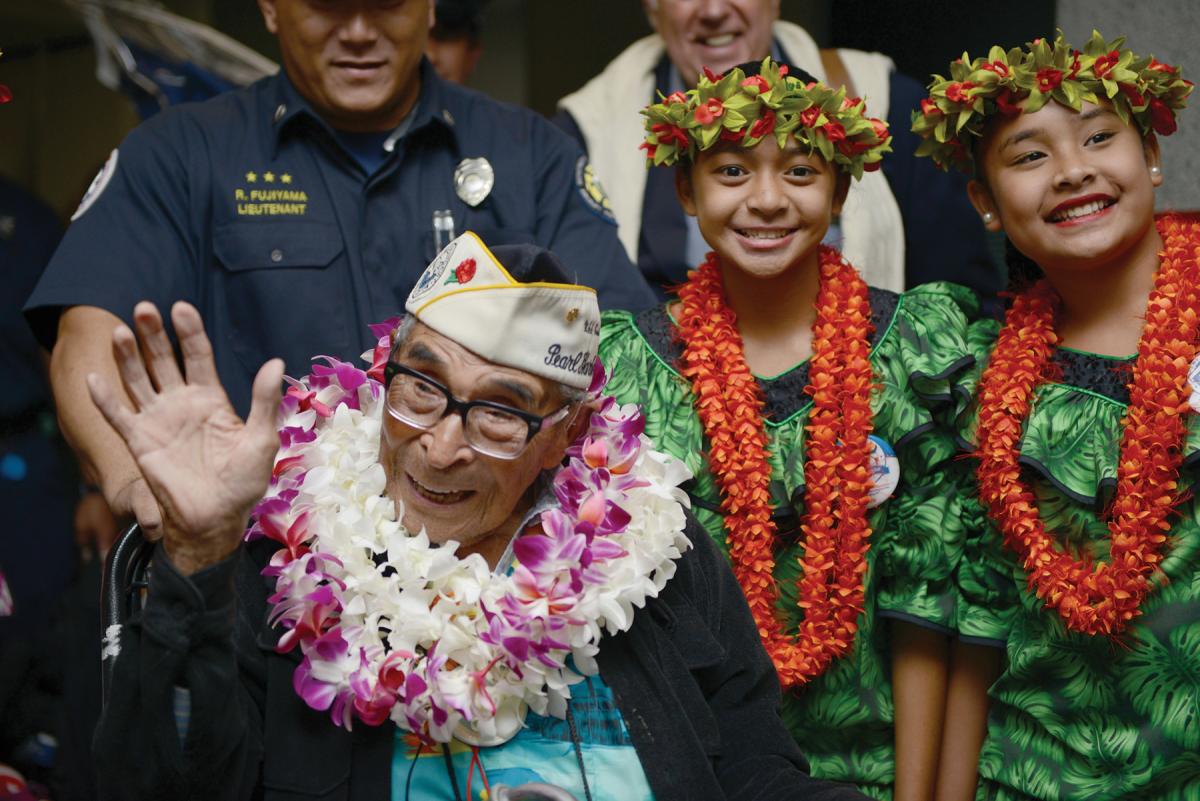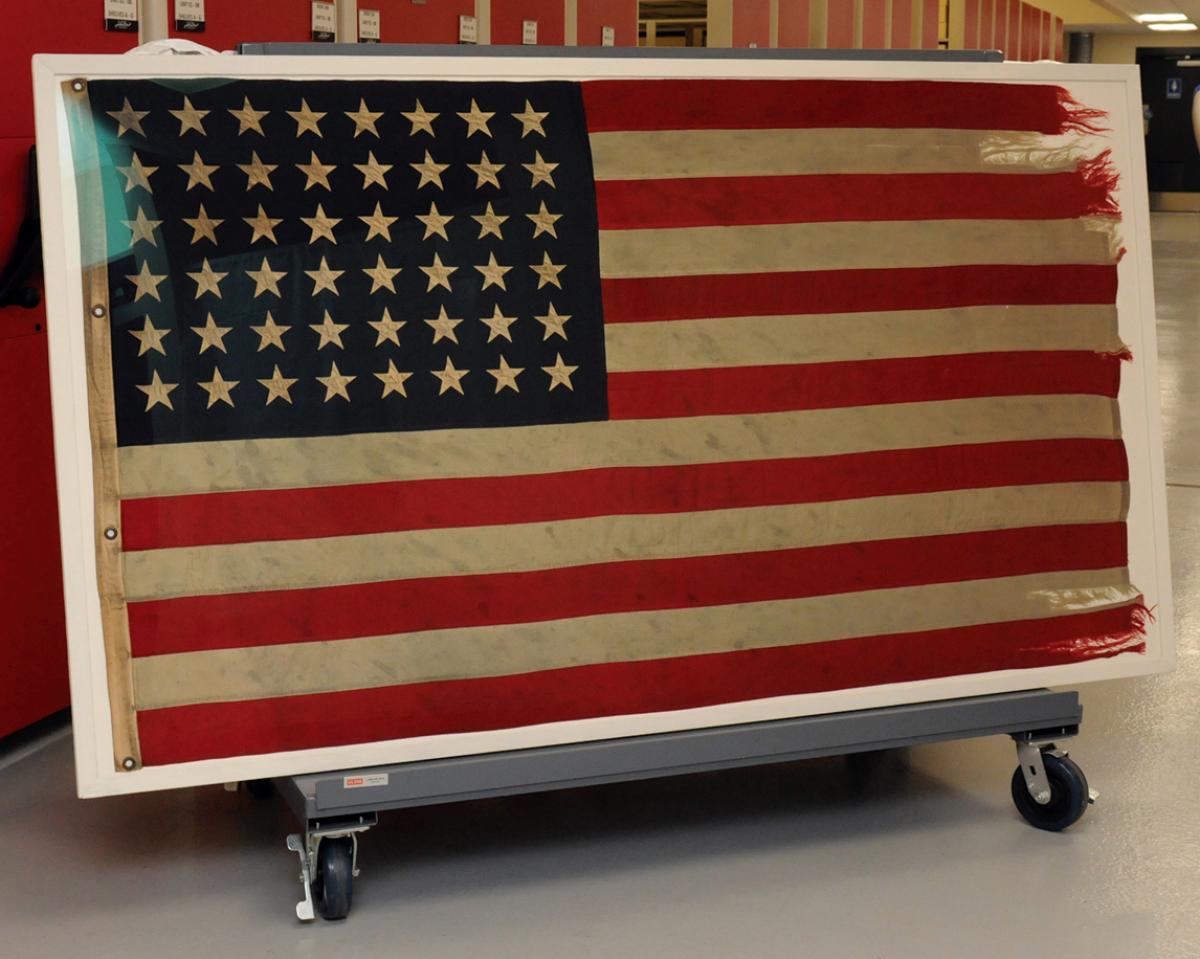Navy Divers Recover Oil from German Shipwreck
U.S. Navy divers from Mobile Diving Salvage Unit 1 on board the USNS Salvor (T-ARS-52) completed on 15 October the removal of fuel oil from the capsized World War II German cruiser Prinz Eugen at Enubuj Island in the Marshall Islands’ Kwajalein Atoll.
In collaboration with the government of the Republic of the Marshall Islands and U.S. Army Garrison Kwajalein Atoll, the Navy completed the safe extraction of an estimated 250,000 gallons of fuel oil from the cruiser. Begun on 1 September, the effort involved nearly two dozen divers along with support from the commercial tanker Humber for transport of the removed fuel oil.
“There are no longer active leaks, with 95 percent of the potential oil volume having been removed,” said Lieutenant Commander Tim Emge, officer-in-charge of salvage operations.
The Prinz Eugen saw combat during World War II. At the end of the European conflict in May 1945, she was surrendered to the British and transferred to the U.S. Navy. She later was used in the 1946 Operation Crossroads nuclear tests. After surviving two tests and subsequent towage to Kwajalein, the vessel began to take on water due to sea valve and rudder damage and ran aground, settling in a capsized position off the coast of Enubuj Island.
In December 2016, U.S. Indio-Pacific Command worked with U.S. Navy Supervisor of Salvage and Diving to evaluate the status of the Prinz Eugen. Funding became available with enactment of the 2018 National Defense Authorization Act, which authorized expenditure of Army funds to offload oil from the wreck.
“Our team’s hard work over the last two years preparing for this project and assembling the right combination of equipment and technical expertise enabled our
success in this very important mission to protect the pristine waters of Kwajalein Atoll from the risk of a catastrophic oil release,” said Stephanie Bocek, project manager at the Supervisor of Salvage and Diving.
The operation was in four stages: anchoring and mooring operations, fuel extraction, fuel transfer, and dome closures of hull access.
After placing nine mooring anchors to hold the Salvor and Humber over the wreck, the diving team began securely drilling holes in precise locations on top of each oil tank, a process called “hot tapping.”
“Hot tapping allows us to safely tie into the many tanks without leakage by creating a secure opening to place the valve, hot tap tool, and pipe for pumping from the highest point on the tank,” said Emge. “We were able to successfully, and most importantly safely, conduct over a hundred hot taps throughout the operation.”
As follow-on oil sampling was conducted on board the Salvor, the removed fuel oil was pumped on board the Humber for transport and refinement for future use.
Naval History Symposium Issues Call for Papers
The History Department of the U.S. Naval Academy invites proposals for papers to be presented at the 2019 McMullen Naval History Symposium on topics related to U.S. or world naval and maritime history. The symposium will be held at the Academy 19–20 September 2019.
Proposals should include a one-page vita and a 250-word abstract that summarizes the research and its contribution to historical knowledge; all elements are to be collated in a single PDF or Microsoft Word file.
Panel proposals (made up of three presenters, a chair, and a commenter) are highly encouraged; they should include all relevant material on the presenters, as well as a one-page vita for the chair and commenter.
The proposal deadline is 15 February 2019. Email proposals to navalhistory
symposium@gmail.com by midnight. The program committee anticipates announcing a draft program by the end of April; papers are due to the committee and to panel chairs/commenters by 16 August.
Online registration for the conference will begin in the spring. A small number of modest travel stipends are available to graduate students and recent PhDs who do not hold a tenure-track position or full-time employment.
Further information on the 2019 McMullen Naval History Symposium will be available online at www.usna.edu/History/Symposium. Specific inquiries may be directed to the Symposium director, Commander Benjamin “BJ” Armstrong, via the email address listed above.
Oldest Pearl Harbor Survivor Passes Away
Ray Chavez, the oldest U.S. military survivor of the 7 December 1941 Pearl Harbor attack, died in his sleep on 21 November. He was 106.
The Navy veteran had visited Washington last May, when President Donald Trump honored Ray Chavez, the oldest U.S. military survivor of the 7 December 1941 Pearl Harbor attack, died in his sleep on 21 November. He was 106.
The Navy veteran had visited Washington last May, when President Donald Trump honored him in Memorial Day services.
Chavez was serving on board the minesweeper USS Condor (AMc-14) when Japanese aircraft bombed Pearl Harbor, heralding the United States’ entry into World War II.
Earlier that morning, the Condor had swept one of the harbor entrances, and Chavez then had gone to his nearby home to rest. “My wife ran in and said, ‘We’re being attacked,’ and I said, ‘Who’s going to attack us? Nobody.’ She said that the whole harbor was on fire and when I got outside I saw that everything was black from all the burning oil,” Chavez once told the San Diego Union Tribune.
Chavez was on continuous duty in and around Pearl Harbor for more than a week during the historic attack’s aftermath. He went on to serve through the next four years of the Pacific war, supporting Marine landings in eight battles.
Later in life, he became a regular attendee at Pearl Harbor commemorative events. “I think he enjoyed the experience, but he never saw himself as any different from the other men he served with,” his daughter, Kathleen Chavez, told the Union Tribune. “He’d always say, ‘I’m no hero. I just did my job.’”
Quest for Lost WWII Flag Has Happy Ending
Thanks to a multi-year project called the Artifact Baseline Reset (ABR) and a new processing center in Richmond, Virginia, the Curator Branch of the Naval History and Heritage Command (NHHC) is making significant strides in managing conservation of its collection of historic U.S. Navy artifacts.
Tasked with ensuring the proper care and preservation of the Navy’s historical artifacts, such as ships’ bells, equipment, arms, ordnance, uniforms, personal equipment, and plaques, and making these artifacts available to the Navy and to the public, the team of dedicated professionals had been unable to manage an increase in workload and care for the backlog.
But the tide turned in 2012 when they received increased resources and financial support. Under the leadership of Frank Thompson, then-head curator, the team quickly set about making changes and began a detailed inventory validation of the Navy’s artifact collection.
“We had never really had a validation of our inventory since its inception in 1908 and that is where the ABR came in,” said Thompson. “It was to basically do a hands-on inventory of the collection and verify once and for all what we had as a baseline and then move forward from there.”
In addition to the increased funds and resources came a new facility in Richmond. Prior to 2014, the NHHC had artifacts stored at several different locations across the country. When the Richmond facility became available, the Curator Branch began consolidating the collection and moved the entire processing operation to what is now the Collection Management Facility (CMF).
“The warehouse is in much better condition and is 300,000 square feet,” said Thompson. “We were able to, as part of the ABR process with the additional resources we were getting, hire staff to man the facility to go through the crates and boxes.”
With improved funding and a new facility, the curators at the NHHC set forth with a common goal: locating a treasured artifact, the USS Taylor (DD-468) flag. The Curator Branch had lost track of the flag in 2002 because of a dramatic increase in artifacts but no additional personnel to work them.
The historic flag was flown from the Taylor on 2 September 1945 when she was one of the first U.S. warships to enter Tokyo Bay for the surrender of the Japanese at the end of World War II. The Taylor carried Allied war correspondents to and from the ceremony on board the USS Missouri (BB-63).
Thompson, current CMF deputy assistant director, received the call on 17 April that the flag had been located in the CMF. Melissa Weissert, a CMF curator, and Thompson were able to present the flag to Taylor veterans in person.
“It was such a great experience,” said Weissert. “All of the veterans and families were so grateful and happy to see the flag again. There was one World War II veteran who was actually on the Taylor when she sailed into Tokyo Bay, and he said he actually remembers looking up at the flag as all these aircraft did a flyover. It was just very moving.”
Weissert and Thompson attribute the success of the presentation to the ongoing ABR process.
“For me it was an opportunity to restore faith between the command and an organization that trusted us to care for one of their most cherished artifacts,” said Thompson. “For both of us, the experience served as a reminder that each of the objects entrusted to our care represents far more than a sum of individual pieces and parts. Each object has its own story to tell.”
—Mass Communications Specialist Second Class (SW/AW) Mutis A. Capizzi, NHHC






